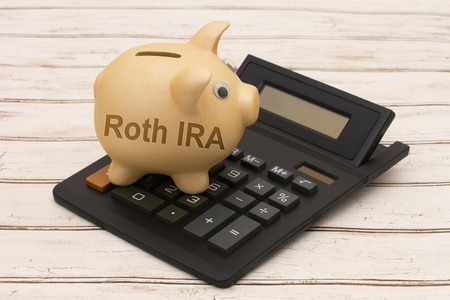
Roth IRA’s will turn 20 years old next year after being established by the Taxpayer Relief Act of 1997. Named after the late Senator William Roth of Delaware, these accounts have become hugely popular.
This is because of the special tax treatment they receive. Although you don’t receive a tax deduction for contributions to a Roth, the earnings grow tax free.
There are certain rules that you have to meet in order to contribute to a Roth. You need earned income and your adjusted growth income cannot be above certain limits established by the IRS each year.
I Contributed Too Much!
Of course, making the Roth IRA contribution doesn’t always go smoothly. The IRS lays out specific rules you can follow to make the correction.
The first step is to determine if you have a gain or loss since the extra contribution was made. With a gain, you need to withdraw the earnings along with the original contribution amount.
If you have losses in your Roth instead, then you’ll need to take out the excess contribution less the losses associated with the contribution.
Note that the gain or loss is calculated across the account and not the individual holding that was purchased with the excess contribution.
Making the Correction
In the IRS instructions for form 8606 you will find an explanation for a corrective distribution. This includes the excess Roth contribution plus earnings and must be reported on form 1040, lines 15a and 15b for the year the excess contribution was made. Attaching a statement explaining the distribution is also a good idea.
You cannot deduct a loss that occurred.
If you were under the age of 59 ½ the earnings generally will be subject to a 10% penalty which is calculated on form 5329.
The following year you will receive a 1099R from the custodian of the Roth account with a distribution code P in box 7. This indicates a return of contribution taxable in a prior year.
If you have already filed your return, you still have six months from the due date of the return. You’ll need to file an amended return in this case.
The other option for correcting the excess contribution is to apply the withdrawal to the following year.
Be sure, however, that you expect to qualify based on the earned income and AGI limitations for the year you want to apply the excess contribution. Otherwise, there is a 6% excise tax for each year that it is considered an excess contribution.
If you have chosen to apply the excess contribution to the next year the tax reporting is treated differently. You will report the excess contribution on form 5329 where the excise tax of 6% of the smaller of the excess contribution or the value of your Roth IRAs as of the end of the tax year is calculated.
Investopedia has a good description of how to complete this here as well.
Take Advantage
Roth IRA’s are a fantastic vehicle for retirement funding.
But, there are some rather complex rules associated with Roth accounts. This could trip you up so in those situations, seek out some professional advice if you are uncertain what applies to you.
Copyright: karenr / 123RF Stock Photo

